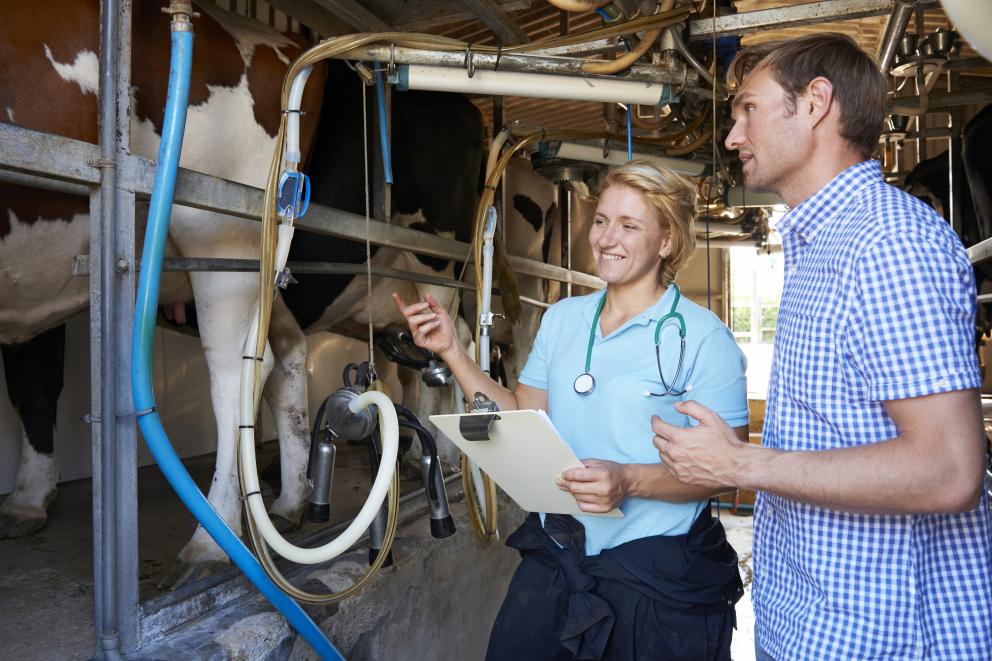You are here
Biosecurity in Practice - Risk Assessment

Introduction
(Abstract from: Biosecurity and the role of risk-assessment, Keith R. Hayes, Centre for Research on Introduced Marine Pests, CSIRO Division of Marine Research, GPO Box 1538, Hobart, 7001, Tasmania, Australia. Email: keith.hayes@marine.csiro.au
“The translocation of infectious and invasive species within a country and internationally remains one of the greatest threats to animal agriculture and human health. Since 1950, world trade has increased 14-fold. In the same period the number of biological invasions in terrestrial, freshwater and marine habitats has increased exponentially [2,3]. Biological invasions are one of the most serious ecological problems of the early 21st century – and the trade policies of the new global economy are an unwitting contributor to this problem.
Article XX of the General Agreement on Tariffs and Trade (GATT-1947) permitted countries to alter normal trading rules in order to protect human, animal or plant life or health, provided that such measures did not discriminate between sources of imports or constitute a disguised restriction on international trade. The GATT provisions were replaced, at least for biosecurity purposes, by the agreement on Sanitary and Phytosanitary Measures (the “SPS Agreement”), negotiated in 1994 at the end of the Uruguay round of multilateral negotiations. The SPS agreement allows countries to enforce measures to prevent the spread of plant-, animal-, or other disease agents, and to prevent or control the spread of pests. These measures, however, must be based on scientific justification or on an “objective” assessment of the risks to human, animal or plant health [4]. In 1997 the International Plant Protection Convention (IPPC) was revised in line with the SPS agreement.”
The SPS agreement and the IPPC ushered the arrival of risk assessment as a scientific tool to manage bio-security issues. Risk-assessment should contribute to pathway analysis and bio-security in three ways: it should identify hazards, quantify risks and help identify management options and strategies.
While formal risk-assessment process transcends the scope of this manual, the principles risk assessment remain paramount. Hazard identification is the critical step in risk-assessment – hazards that are not identified are not assessed so risk remains underestimated. Biosecurity hazards can be broadly classified into three groups: vectors, pathways and species.
Risk is a function of the likelihood and consequences of undesired events. In a bio-security context the undesired event are threats to animal and human health. In a formal risk- assessment process effort is given to quantifying the likelihood and consequences of breaches in biosecurity. Because quantitative risk-assessments for biological stressors can be notoriously difficult to calculate, the following grid (Adapted from the Assessment of Threat Scenarios, Health Canada, Office of Laboratory Security) may help those planning biosecurity programs categorize risk.
General
A biosecurity program identifies health risks that each herd faces and then identifies the most important, practical, and cost effective actions that can be taken to minimize those risks in that herd (Developing Biosecurity Programs for Dairy Herds, S. Godden, S. Stewart, P. Rapnicki, J. Fetrow, S. Wells, J. Schefers, Dept of Veterinary Population Medicine, College of Veterinary Medicine, 225 VMC, 1365 Gortner Ave., St. Paul MN 55108 Email: godde002@umn.edu.) Veterinarians and producers should perform a risk assessment in order to decide which diseases need to be addressed, and the most effective and cost-efficient way to do this.
The University of Minnesota protocol for risk-assessment and biosecurity planning for dairy herds include the following steps:
1. Identify the goals of the dairy operation: This relates to the products sold now and in the future (milk, dairy beef, calves heifers, milk cows, embryos, semen) and how long the dairy plans to operate.
2. Identify and prioritize the key hazards on each operation in relation to the goals: This involves identifying the infectious diseases most likely to threaten the operation.
3. Evaluate key methods of transmission of important pathogens (e.g. understand incubation periods, duration of clinical disease, duration of shedding, survival or growth in the environment) (Outlined in Table 2 for most major pathogens).
4. Evaluate potential methods of pathogen control and changes necessary to implement an effective biosecurity program. The benefits of controlling risks must be weighed against the costs and managerial difficulty of such a program.
Producers should begin by targeting the two or three of the most important management areas. Once management of these areas is being done well, the program could then be expanded if necessary.
Once the risk assessment is performed, the producer, veterinarian and management team can plan and then implement a preventive biosecurity program. It is important that the final plan be documented and communicated to all members of the management team. After its implementation, a monitoring or surveillance program must be put into place to evaluate the plan’s effectiveness and to identify new or emerging diseases. This requires accurate diagnosis of diseases and consistent recording of disease occurrences. In the ideal system, any animal that dies on the dairy would undergo a necropsy to confirm the cause of death. The biosecurity program should be reviewed at least annually, if not every 6 months to begin with, and expanded or modified as needed.
Veterinarians and producers designing biosecurity programs for their herds can take advantage of risk assessment tools developed utilized by other groups. For example: the University of Vermont in cooperation with the USDA developed a web page highlighting a logical and stepwise approach to risk-assessment and biosecurity planning
Visitor Biosecurity: Healthy Farms - Healthy Agriculture
